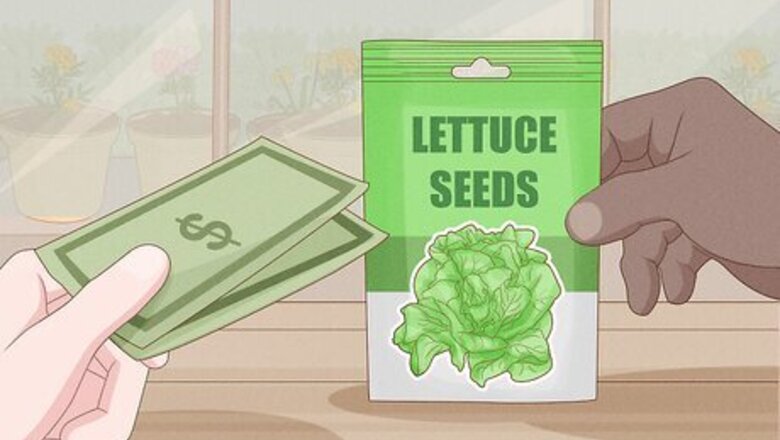
views
Planting Butter Lettuce Outdoors
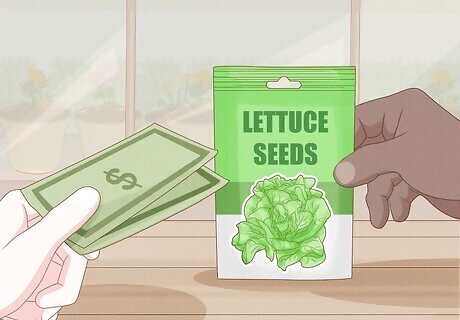
Get lettuce seeds online or at your local garden or department store. You can purchase the seeds for about $2.00-$5.00 per pack. You will likely only need to purchase one packet. Lettuce seeds are very small, so one packet will give you over 500 seeds. Because the seeds are so small, some brands make pelleted seeds. Pelleted seeds are covered in an organic clay coating. The extra layer makes the seeds more visible and easier to handle.
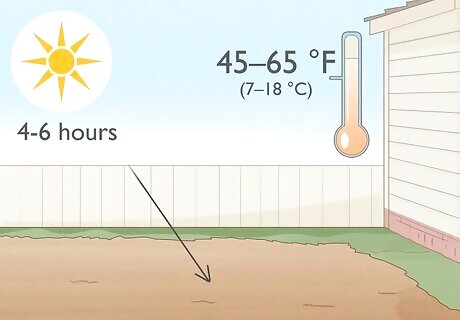
Choose a location to plant your lettuce. Butter lettuce should get a minimum of 4-6 hours of direct sunlight a day, however, it will tolerate partial shade as well. It grows the best in temperatures between 45–65 °F (7–18 °C), but will tolerate temperatures as low as 20 °F (−7 °C) and as high as 80 °F (27 °C). Lettuce grows best in cooler weather, making it most suitable for spring and fall harvests. If you're growing lettuce over the summer, then the heat may cause the crop to bolt, which will make it taste bitter. If you are planting the lettuce during warmer weather, shaded areas are a good option. The soil should be rich, smooth, and well-drained. If your soil is hard or clumpy, use a tiller to break it up and smooth it out. You can start your lettuce in planting trays indoors, but lettuce does really well when it’s planted directly in the soil of your home garden.
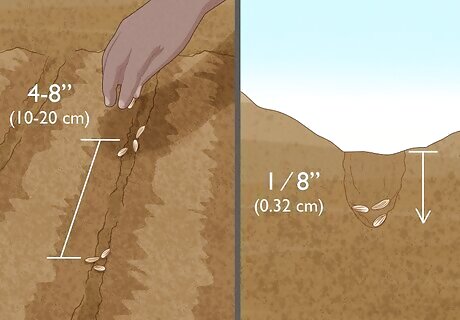
Dig a shallow trench to sow seeds for controlled growth. Drop 2-3 seeds in the trench every 4–8 inches (10–20 cm) and lightly cover the seeds with about ⁄8 inch (0.32 cm) of soil. Water the seeds thoroughly after planting. The seeds need light to germinate, so it’s important that you don’t cover them with a thick layer of soil. Plant new seeds in the open spaces every week or 2. This helps to space out your lettuce growth so you can enjoy your harvest over a longer period of time instead of all at once. Some gardeners opt to broadcast the seeds over the planting area. This method works, however, you can expect to have lots of small heads of lettuce that grow all at one time. This can make it difficult to use all of your harvest and often leads to a lot of waste.
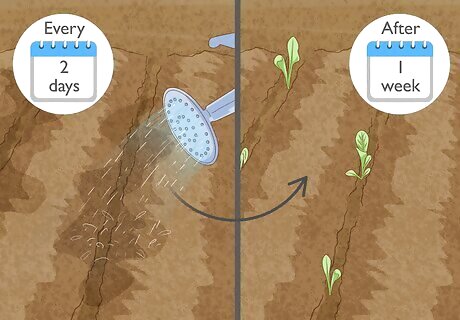
Water your seeds lightly every 2 days until they germinate. The soil should remain moist, but not soggy. If you notice that the soil dries out quickly, you can water it daily; if the soil is still fairly moist on the second day, wait until the third day to water again. Germination will occur in about 1 week after planting.
Caring for Your Plants
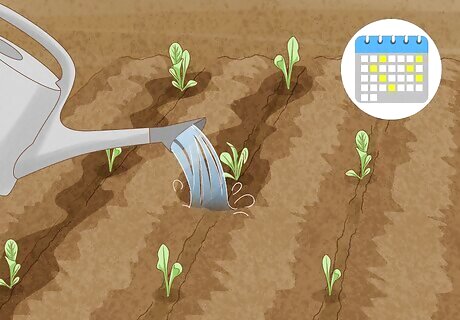
Keep your plants thoroughly watered. The soil should remain moist, but not soggy. Watering 1-2 times per week is a good rule of thumb. However, depending upon your geographical location, temperature, and soil type, you may need to adjust the frequency and amount that you water. For example, sandy soil provides better drainage for water. You may have to water your lettuce frequently if you have this type of soil. Clay soil takes longer to drain, so you may not need to water as often. The best way to know how often to water is to check your soil and plants regularly. If the soil looks or feels dry, or if the lettuce leaves are beginning to wilt, it’s time to water. If the soil is still moist, check again the following day.
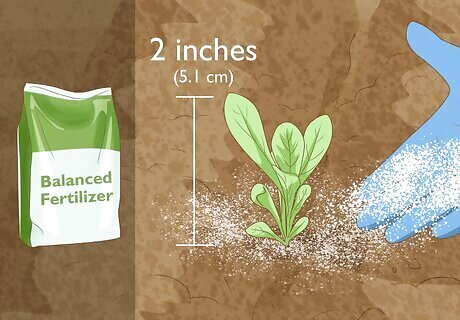
Apply a well-balanced fertilizer when seedlings are 2 inches (5.1 cm) tall. Fertilizing your plants will help ensure that they have the proper nutrients to thrive and will increase leaf production. Choose a liquid or granular fertilizer that is rich in nitrogen, potassium, and phosphate. Apply the fertilizer according to package directions. For an organic option, use compost or a fish emulsion that is mixed at half of the recommended dose on the package.
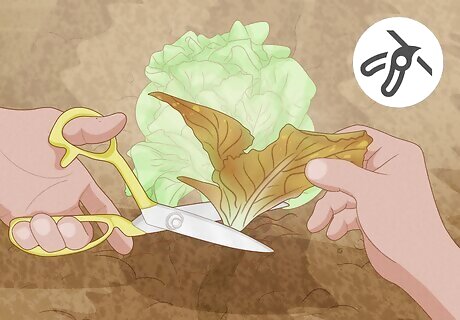
Prune your lettuce plants to keep them healthy. Remove all brown leaves on your lettuce plants by pulling them off or cutting them with garden shears. The brown leaves are called “tip burn” and is caused by a lack of calcium and/or uneven watering and high temperatures. Once your plants reach 6–10 inches (15–25 cm), cut off the top 2–4 inches (5.1–10.2 cm) to keep them growing.
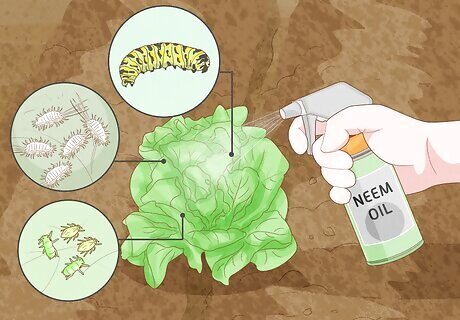
Protect your lettuce from pests. Common lettuce pests include birds and small animals like rabbits, squirrels, and dogs; and insects such as aphids, caterpillars, grasshoppers, slugs, and thrips. Lettuce can also be affected by various types of fungi. Use garden nets or fencing to protect your lettuce from large pests like animals and birds. Organic neem oil works great to protect your plants from almost all types of insect pests. It is even effective in controlling aphids and caterpillars, which generally can’t be controlled by other chemical insecticides. However, it's most effective on young plants. When using neem oil, you need to reapply it once a week to prevent damage caused by pests. You can also use neem oil if your lettuce suffers from fungal infections such as root rot, black spot, or sooty mold.
Harvesting Butter Lettuce
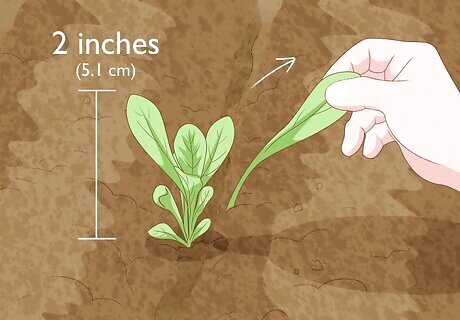
Pull lettuce leaves off as needed for immediate use. Once the leaves reach at least 2 inches (5.1 cm), you can start harvesting your butter lettuce at any time! The earlier you harvest the leaves, the sweeter and more tender they will be. As the lettuce continues to grow, the leaves will become more bitter. Wash the leaves thoroughly and pat them dry with paper towels before eating them. It is not recommended to pull leaves from a lettuce head if you plan to harvest the entire head.
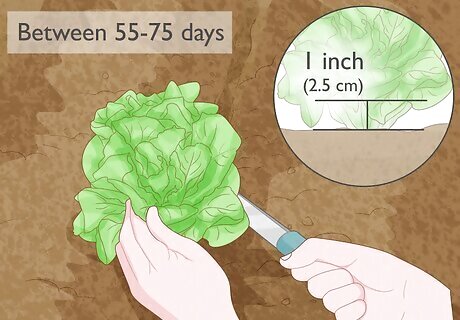
Use garden shears or a knife to harvest a full head of lettuce. Full heads will reach maturity and be ready to harvest between 55 and 75 days. Use the shears or knife to cut the lettuce just below the crown, about 1 inch (2.5 cm) from the ground.
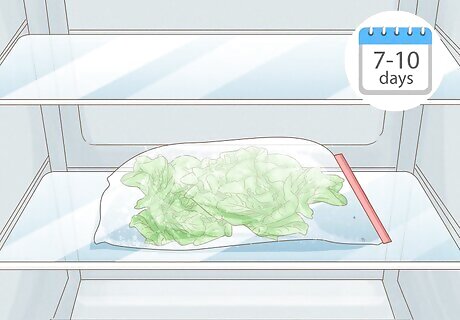
Store your lettuce in a plastic bag or container in the fridge for 7-10 days. Do not wash the lettuce until you are ready to use it. Place a couple of paper towels around the unwashed lettuce to help absorb excess moisture. Keep the bag or container tightly sealed until you are ready to use the lettuce. Be sure to thoroughly wash your lettuce before eating it. Pay special attention to full heads of lettuce to make sure you clear out insects that may be hiding in the inner leaves. If you use neem oil or a pesticide on your lettuce, then you'll need to thoroughly clean it before you eat it. You may want to use a vegetable wash.
















Comments
0 comment